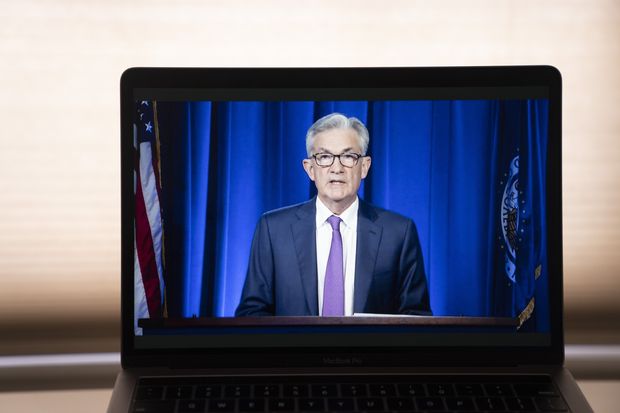
Fed Chairman Jerome Powell speaks during a virtual news conference last month seen on a laptop computer.
Andrew Harrer/Bloomberg News
Fed Chairman Jerome Powell will speak next Thursday on how the central bank plans to achieve its twin goals of stable prices and maximum employment once the coronavirus pandemic has ended.
The Fed has spent the last year reviewing its “monetary policy framework.”
The results were expected earlier this year but the process was derailed by the outbreak of the infectious disease, which pushed the economy into its deepest post-war recession.
But Fed officials want to move forward and codify changes to their strategy, based on what they’ve learned since 2012.
That’s when the Fed formally adopted a 2% inflation target. Since then, inflation has remained stubbornly below the target even as the economy was enjoying the longest expansion on record.
Powell will deliver his remarks to the annual Jackson Hole economic symposium held by the Kansas City Fed. His remarks will be at 9 a.m. on Thursday Aug. 27.
Usually, the event allows Fed officials and their guests to meet in the shadow of the Grand Teton Mountains to enjoy fly-fishing and hiking.
The event is being held virtually this year and for the first time the proceedings will be open to the public on the regional Fed bank’s YouTube page.
Fed watchers think the central bank will end the practice of raising interest rates at the first whiff of higher inflation.
Under the new strategy, the Fed will allow inflation to run hot for a time – to make up for the time that inflation was below the 2% target. This policy is called “inflation-averaging.”
In the past, the Fed didn’t pay attention to where inflation had been, preferring to let bygones be bygones.
Supporters of the practice think this will give investors confidence that the Fed will hit 2% target.
Other central banks, notably the Bank of Japan, have struggled to push inflation higher.
Too-low inflation can be just as bad as too-high inflation, economists say. When inflation is low or falling, consumers hold off purchases waiting for lower prices. This weakens the economy and can start a downward spiral.
Many Wall Street economists think the Fed has already adopted this strategy in practice.





